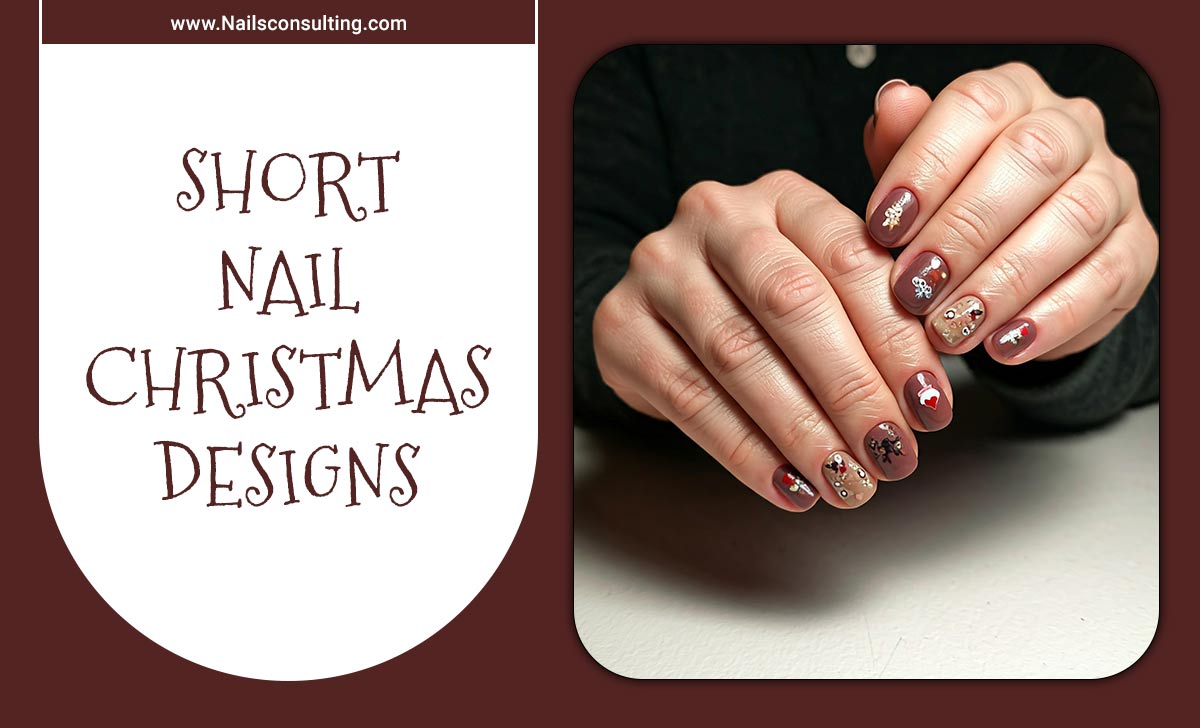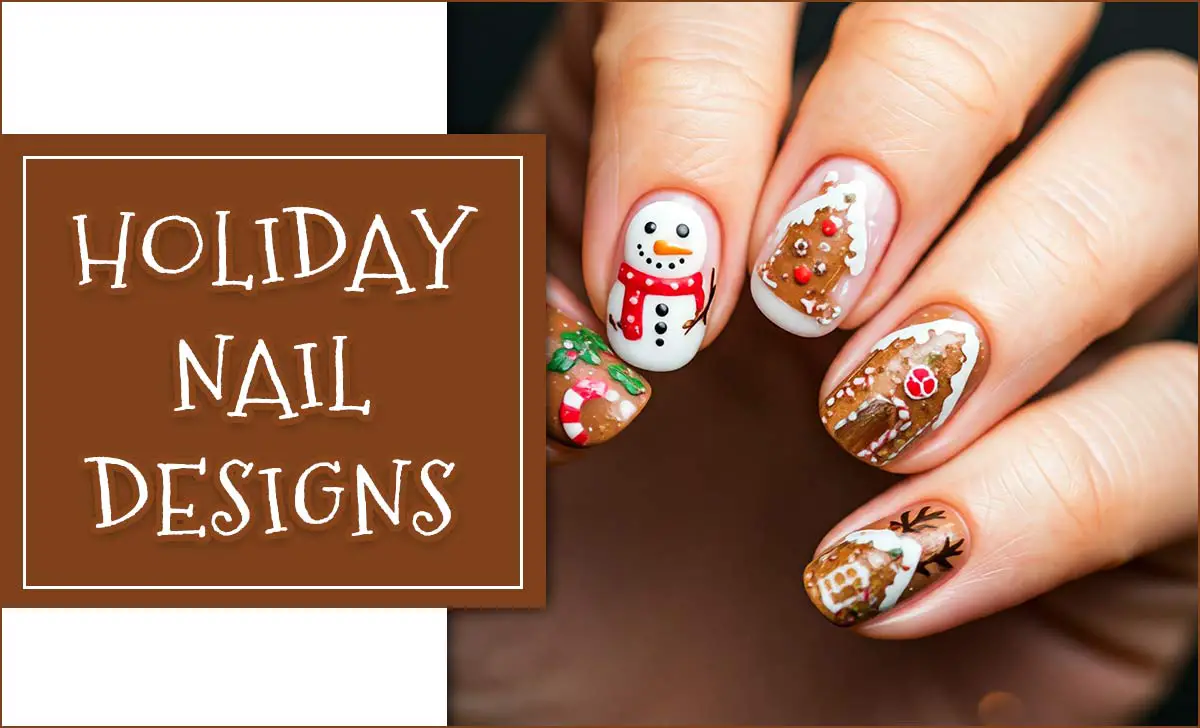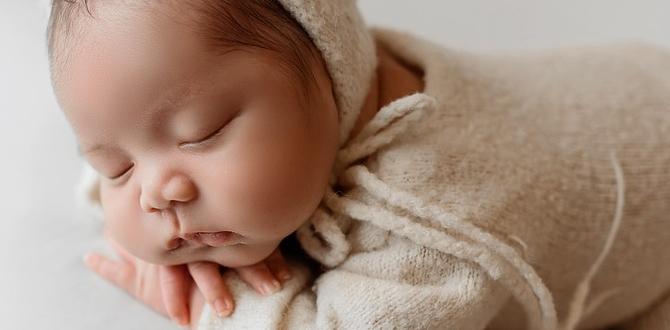Nail Art Tutorial Step by Step: Effortless Genius
This guide makes nail art easy for beginners! Learn simple, step-by-step techniques to create stunning designs at home. With basic tools and a little practice, you’ll master effortless nail art that looks professionally done. Get ready to express your creativity and rock fabulous nails!
Ever look at beautiful nail art designs and think, “There’s no way I could ever do that”? You’re not alone! Many of us imagine nail art requires a steady hand of a surgeon or a magic wand. The truth is, creating gorgeous nail designs is much more accessible than you might think. It’s all about breaking down the process into simple, manageable steps. Forget frustration and hello to fun! This guide is your new best friend, designed to take the intimidation out of nail art and unlock your inner artist. We’ll walk you through everything, step by easy step, so you can start creating amazing looks right away. Ready to transform your nails into tiny masterpieces?
Your Nail Art Journey Starts Here: Essential Tools & Prep
Before we dive into the fun designs, let’s get you set up with the essentials. Think of these as your artist’s toolkit. Having the right gear and preparing your nails properly makes all the difference. Trust me, a little preparation goes a long way in making your nail art look polished and last longer!
Must-Have Nail Art Tools for Beginners
You don’t need a professional salon’s worth of equipment to get started. Here are a few key items that will make your nail art endeavors much smoother:
- Base Coat: This is your nail’s best friend! It protects your natural nail from staining and helps your polish adhere better.
- Top Coat: This shiny finish locks in your design, adds durability, and gives your nails that salon-smooth gleam.
- Nail Polish Colors: Start with a few basic colors you love. Think neutrals, a fun bright, and maybe a metallic.
- Dotting Tools: These have little metal balls on the end in various sizes, perfect for creating dots, flowers, and swirling patterns.
- Thin Nail Art Brush: A fine-tipped brush is fantastic for drawing delicate lines, outlines, and intricate details.
- Toothpick or Orange Stick: Even common household items can be nail art heroes! They’re great for picking up glitter or cleaning up edges.
- Nail Polish Remover: For those little oops-moments or for cleaning up your cuticles.
- Cotton Pads/Balls: Essential for applying remover.
Nail Prep: The Foundation for Flawless Art
Just like any great painting, your canvas needs to be perfect. Prepping your nails ensures your nail art not only looks better but also stays put.
- Cleanse: Start with clean nails. Remove any old polish with nail polish remover.
- Shape: File your nails into your desired shape. Ensure all nails are even. A gentle tip for filing is to move in one direction to prevent weakening the nail.
- Cuticle Care: Gently push back your cuticles. You can use an orange stick or a pusher tool. Avoid cutting cuticles, as this can lead to infection. For more on healthy cuticles, the American Academy of Dermatology offers excellent advice on nail health.
- Buff (Optional but Recommended): Lightly buff the surface of your nails to create a smooth, even base for polish. This helps polish adhere better.
- Wipe Down: Use a little nail polish remover on a cotton pad to wipe away any oils from your nail surface. This ensures your base coat and polish will stick well.
Effortless Nail Art Design 1: The Chic Dot Mani
Let’s start with a design that’s super simple but looks incredibly chic: the dot manicure. It’s versatile, fun, and doesn’t require much artistic skill!
Tools Needed:
- Base Coat
- Your favorite Nail Polish Colors (at least two)
- Dotting Tools (or the tip of a toothpick)
- Top Coat
Step-by-Step Guide:
- Apply Base Coat: Paint one thin, even layer of base coat on each nail. Let it dry completely.
- Apply First Color: Paint your nails with your main polish color. You might need two coats for opaque coverage. Let the polish dry until it’s mostly set but not bone dry – slightly tacky is perfect for the next step.
- Start Dotting: Dip your dotting tool (or toothpick tip) into a contrasting polish color. Gently place dots onto your nail. You can create patterns like:
- A single row of dots along the free edge.
- Randomly scattered dots for a playful look.
- A gradient of dot sizes (start larger at the base, smaller towards the tip).
- A flower shape by making a small circle of dots and adding a center dot.
- Clean as You Go: Dip your dotting tool in nail polish remover occasionally to keep the dots clean and defined.
- Dry Time: Let your dots dry thoroughly. This is important to prevent smudging.
- Apply Top Coat: Once everything is dry, apply a layer of top coat to seal your design and add shine.
Pro Tip:
Experiment with different color combinations! Metallics and neons look great as dots over a neutral base. For an extra sparkle, add a tiny bit of glitter polish to the center of your dots.
Effortless Nail Art Design 2: The Sophisticated French Tip Twist
The French manicure is a classic for a reason, but we can give it a modern, effortless twist. Instead of just white, let’s play with color and shape!
Tools Needed:
- Base Coat
- Nail Polish Colors (at least two – one for the base, one for the tip)
- A Thin Nail Art Brush or a Striping Tape
- Top Coat
Step-by-Step Guide:
- Apply Base Coat: Coat all nails with your base coat and let dry.
- Apply Base Color: Paint nails with a sheer nude, pink, or a soft pastel color. Apply two coats if needed for even coverage. Let this dry completely.
- Option A: Using a Thin Brush:
- Dip your thin nail art brush into your contrasting tip color.
- Gently paint a line along the edge of your nail. For a classic French look, use a curved freehand line. For a twist, try a sharp diagonal line, a wavy line, or even a “V” shape at the tip.
- Take your time and go slow. It’s okay if it’s not perfect; you can always clean up the edges with a fine brush dipped in nail polish remover.
- Option B: Using Striping Tape:
- Once your base color is completely dry, carefully apply a piece of striping tape across the tip of your nail where you want the color change to happen. Press down firmly to ensure no polish seeps underneath.
- Paint over the tape with your contrasting tip color.
- While the tip color is still wet, carefully peel off the striping tape. This leaves a crisp line.
- Let it Dry: Allow the tip color to dry completely.
- Apply Top Coat: Finish with a generous layer of top coat to seal the design and add a beautiful shine.
Design Variations:
Try a “reverse French” by painting the color at the cuticle line. Or, use a bright color for the base and a subtle metallic for the tip. Glitter tips are also a fun way to elevate the look!
Effortless Nail Art Design 3: The Simple Gradient Wash
A gradient or “ombré” effect can look complex, but it’s surprisingly easy to achieve with a little sponge magic. This design creates a beautiful, seamless blend of colors.
Tools Needed:
- Base Coat
- 2-3 Nail Polish Colors that blend well together
- A makeup sponge or a cosmetic wedge
- A piece of cardboard or foil to put polish on
- Top Coat
- Optional: Vaseline or liquid latex for cuticle protection
Step-by-Step Guide:
- Prep and Protect: Apply your base coat and let it dry. For easier cleanup, apply a thin layer of Vaseline or professional liquid latex around your cuticles and the sides of your nails.
- Apply Colors to Sponge: On your piece of cardboard or foil, paint two or three stripes of your chosen polish colors next to each other. Make sure the colors are touching where they meet. Work quickly as nail polish dries fast.
- Sponge it On: Gently press the makeup sponge onto the polish stripes, picking them up onto the sponge.
- Transfer to Nail: Now, lightly dab the sponge onto your nail. You may need to dab a few times to build up the color and blend the gradient.
- Repeat for Other Nails: Reapply polish to your sponge for each nail, and repeat the dabbing process.
- Clean Up: Carefully remove the Vaseline or liquid latex. Use a cotton swab dipped in nail polish remover to clean up any polish that got onto your skin.
- Let it Dry: Allow the gradient design to dry completely.
- Apply Top Coat: Seal the beautiful blended colors with a generous layer of top coat.
Color Blending Tips:
For a smooth transition:
- Light to dark: Start with a light color at the base of the nail and blend into a darker shade at the tip.
- Cool to warm: Blend shades from the same color family, like different shades of blue or pink.
Effortless Nail Art Design 4: The Minimalist Accent Nail
Short on time but want a touch of flair? An accent nail is your answer! Pick one nail (usually the ring finger) and give it a little extra love with a simple design.
Tools Needed:
- Base Coat
- Nail Polish Colors
- Dotting Tool or thin brush
- Top Coat
Step-by-Step Guide:
- Base and Main Color: Apply base coat to all nails. Then paint all your nails with your chosen main polish color, except for your accent nail. Paint the accent nail with a different, complementary color, or leave it plain for now to focus on the design.
- Design the Accent Nail: Once the main polish is dry, choose a simple design for your accent nail. Ideas include:
- A single stripe: Use a thin brush or striping tape to add a metallic or contrasting stripe down the center or across the tip.
- A cluster of dots: Use a dotting tool to create a small cluster of dots in a corner or along the edge of the nail.
- A small heart: With a fine brush, carefully paint a tiny heart.
- Glitter focus: Paint the accent nail with a glitter polish for a sparkly statement.
- Let Dry and Seal: Allow the accent nail design to dry completely, then apply a top coat to all nails to unify the look.
Why it Works:
This is a fantastic option for busy days or when you’re just starting out. It adds personality without being overwhelming, and it’s incredibly quick to execute. It shows you put in a little extra effort, which is always appreciated!
Troubleshooting Common Nail Art Hiccups
Even with the easiest designs, we all run into little bumps along the way. Here’s how to fix common nail art issues:
Soggy Polish or Smudges
- Problem: You touch your nail too soon, and the polish smudges or looks uneven.
- Solution: Be patient! Let each coat of polish dry completely. For touch-ups on small smudges, you can try to carefully smooth them with a bit more polish using a fine brush, but it’s often best to just reapply that nail. For DIY nail art, consider investing in quick-dry drops or a fast-drying top coat.
Wobbly Lines or Uneven Dots
- Problem: Your lines are shaky, or your dots aren’t uniform.
- Solution: Don’t fret! Embrace the imperfection. Wobbly lines can add a hand-drawn charm. If it bothers you, clean it up immediately after application with a small brush dipped in remover. For dots, try using a consistent dotting tool size and don’t overload the tip with polish. Taking breaks between dipping into the polish can help.
Polish Gets on Skin
- Problem: You’ve got polish smudges on your fingertips and cuticles.
- Solution: This is where our prep tip for Vaseline or liquid latex comes in handy! If you forgot that step, use a small brush (like an old eyeliner brush) or a toothpick dipped in nail polish remover to carefully clean up the edges. Cleanliness is key for a professional finish.
Bubbles in Polish
- Problem: You see little air bubbles trapped in your polish.
- Solution: This often happens when polish is applied too thickly, or if it’s applied over wet base coat. Ensure each layer is dry before applying the next, and use thin, even coats. If you have bubbles, a good top coat can sometimes fill them in slightly, but preventing them is easier.
Nail Art vs. Natural Nails: A Brighter Future
You might be wondering if all this polish and art is good for your nails. The key is balance! Using a good base coat is crucial for protecting your natural nails. According to the Nails Magazine, dark polishes especially can cause staining if not applied over a base coat. Regularly giving your nails a break from polish allows them to breathe and recover. In between manicures, focus on strengthening and hydrating your nails. This approach ensures your nails stay healthy and strong, ready for your next creative expression.
Final Touches: Adding Sparkle and Shine
Once your design is complete and dry, the top coat is your final, essential step. It’s not just about shine; it’s about protection. A good top coat:
- Seals your design, preventing chips and smudges.
- Adds a beautiful gloss that makes colors pop.
- Can fill in minor imperfections for a smoother finish.
For extra flair, consider a top coat with glitter or a matte finish for a completely different vibe! Remember to reapply top coat every few days to extend the life of your manicure.
Frequently Asked Questions About Beginner Nail Art
Q1: How long does it take to do simple nail art?
A1: For easy designs like dots or a simple stripe, you can often complete a full manicure in 30-60 minutes, including drying time for multiple coats. The key is allowing sufficient drying between steps.
Q2: Can I do nail art with just regular nail polish?
A2: Absolutely! While gel polish offers extreme durability, regular nail polish is perfect for learning and experimenting with nail art. The techniques described here work wonderfully with standard polishes.
Q3: What are the best colors to start with for nail art?
A3: It’s good to have a mix! Start with a classic base like nudes, whites, or blacks. Then add a few vibrant colors (like red, blue, or pink) and at least one metallic (gold, silver, or rose gold) for versatile design options.
Q4: How can I make my nail art last longer?
A4: Proper prep is vital! Ensure nails are clean, dry, and free of oils. Use a good base and top coat. Apply polish in thin, even layers, and let each coat dry before the next. Avoid harsh chemicals and activities that can chip your polish, like using your nails as tools.
Q5: My nail polish brush is clumpy. What should I do?
A5: Chunks in your polish can be a sign it’s drying out. You can try adding a drop or two of nail polish thinner (never remover, as that breaks down the polish) to help reconstitute it. If it’s too far gone,




